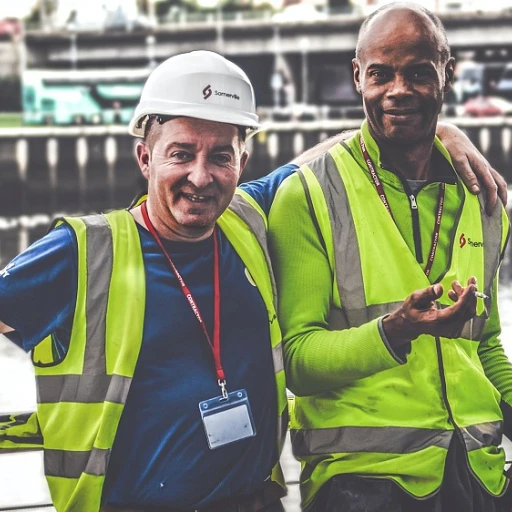Understanding the role of AI in human resources
Ai's role in reshaping HR tasks
Artificial intelligence has come a long way, and its infiltration into human resources (HR) is no small beans. But let’s not get ahead of ourselves, just yet.
AI is dramatically changing how HR professionals operate. Tools powered by artificial intelligence are taking over routine tasks, from screening resumes to managing employee performance, even aiding in complex decision making.
According to a 2022 Gartner study, around 17% of organizations are already using AI-based solutions in their HR departments, with another 30% planning to adopt it in the next two years. SHRM (Society for Human Resource Management) confirms that AI can cut administrative work by up to 40%, allowing HR professionals to focus on more strategic initiatives.
Streamlining routine tasks
Got a pile of resumes to sift through? AI handles that with ease, freeing up HR managers to focus on strategy and engagement. Machine learning algorithms can screen resumes in the blink of an eye, identifying top candidates based on predefined criteria. Microsoft’s AI, for instance, claims to reduce the resume screening time by over 80%.
Take the hiring process: Chatbots like Olivia by Paradox are making waves by engaging with candidates, answering frequently asked questions, and scheduling interviews—all without a human lifting a finger. This isn't just time-saving but also amps up the quality of candidate interactions.
Enhancing performance management
When it comes to performance management, predictive analytics is a game-changer. AI-driven tools can provide data-driven insights, helping HR teams identify areas for improvement. You’re not just flying blind anymore; you’ve got the data to back up your decisions.
AI also helps in setting clear and measurable objectives via tools like OKRs (Objectives and Key Results), making everyone's job a little easier. This way, employees know exactly what's expected of them, and managers can keep track of performance in real-time.
For instance, in New York City, several companies have adopted predictive analytics to foresee employee turnover. They’ve seen up to a 20% decrease in turnover rates, saving both time and resources on new hiring.
Combating bias in decision making
Bias is one of HR’s biggest challenges, but AI can help in mitigating it. An IBM research study suggests that using AI in recruitment reduces bias by a substantial 40%. This levels the playing field, ensuring that decisions are made based on objective data rather than unconscious prejudices.
IBM's Watson, for instance, is already being used by several companies in Canada for unbiased candidate assessments. It's not perfect, but it’s a step in the right direction.
Now, I know what you're thinking: “This sounds amazing, but what about the human touch?” Don’t worry, we'll get to that in our next part. In the meantime, if you're keen on exploring how HR can balance AI and human intelligence, check out this resource.
Can AI truly replace human resources?
Evaluating AI's capabilities in HR
When considering the question, "will AI replace human resources?" we need to dive into the heart of what AI can actually do. Human resources (HR) is a field brimming with complex, nuanced tasks. While AI shines in data-driven decision making, automating routine tasks, and providing predictive analytics, it often falls short in areas requiring human touch, empathy, and emotional intelligence.
For instance, tools like chatbots and virtual assistants, which manage frequently asked questions and streamline processes, are transforming HR departments. They free up professionals to focus on strategic initiatives and improve decision making, according to a Gartner study. But can these tools replace the nuanced, human-driven interactions needed to maintain a strong company culture or handle sensitive performance management issues?
The strengths and limitations of AI in HR
AI excels in speeding up the hiring process through machine learning algorithms that sift through large pools of candidates, identifying top fits based on specific job descriptions. This not only saves time but also ensures a higher level of accuracy in finding the right talent. But the real question is, can AI identify areas of improvement in employee engagement or understand the emotional intelligence required for effective talent management?
Experts believe AI can certainly help enhance these processes. According to a report by the Society for Human Resource Management (SHRM), companies adopting AI tools report a 15% increase in hiring efficiency. Nevertheless, the human element remains irreplaceable when it comes to nurturing employee relationships and maintaining a positive employee experience.
The necessity of human touch in HR
Human resources professionals bring a unique ability to understand and manage complex decision making within an organization. While AI provides data-driven insights that help in predictive analytics, it's the human intelligence and connection that truly foster a positive environment. An effective HR strategy always combines AI's efficiency with the irreplaceable human touch.
Take New York City's HR sector, for example. HR managers here use AI for automating routine tasks and sourcing candidates. However, they still rely on their teams for final hiring decisions, conflict resolution, and fostering employee engagement.
In conclusion, the integration of AI in HR is a double-edged sword—it can improve productivity and efficiency but can't fully replace the emotional and personal elements that genuine HR management requires.
AI-driven hiring process: efficiency vs. human touch
{ "result":"Unleashing efficiency in the hiring process
Picture this: your HR team is drowning in resumes, barely making time for meaningful interactions with candidates. AI can change the game by swiftly sifting through applications, highlighting the best fits, and freeing up HR professionals to focus on the human side of hiring. According to a 2020 study by the Society for Human Resource Management (SHRM), 66% of HR managers reported that AI improved the speed of the hiring process.AI-driven pre-screening
Take AI-powered pre-screening tools like chatbots and virtual assistants. These virtual helpers conduct initial interviews, handle frequently asked questions, and guide candidates through the application process. By doing so, they save HR departments countless hours. For example, companies like Unilever use AI for their initial interview stages, reportedly reducing the time-to-hire by nearly 50%.Data-driven insights in candidate selection
AI's capacity for data-driven insights is also invaluable. Machine learning algorithms analyze vast amounts of candidate data, considering factors from job experience to soft skills. This allows for more informed decision making—ensuring that the selected candidates are not just technically fit but also align with the company's culture. A study conducted by Gartner revealed that organizations employing AI in their recruitment process saw a 20% increase in the quality of hires.The importance of the human touch
However, efficiency shouldn't come at the cost of empathy. The "human touch" remains crucial. AI might identify excellent candidates, but it's the HR professionals who build relationships and gauge emotional intelligence. As noted by Josh Bersin, an HR industry analyst, blending AI with human judgment enables companies to create a balanced and effective hiring strategy. "AI can handle about 75% of the hiring process," Bersin states, "but the final 25% requires human empathy and understanding."Predictive analytics in talent management
Turning data into strategic insights for talent management
Predictive analytics is an absolute game-changer when it comes to talent management. By utilizing data-driven insights, HR professionals can forecast future trends and make informed decisions. According to a report by Gartner, 56% of businesses are adopting HR analytics to enhance workforce planning and talent management. One way predictive analytics helps is by identifying high-potential employees. It scans through employee performance data, engagement metrics, and even social interactions within the workplace. This way, HR isn’t just making guesses; they’re using solid data to spot future leaders. A study revealed in SHRM found that companies using predictive analytics in their HR processes saw a 25% improvement in identifying future leadership within their organizations.Getting ahead of employee turnover
Employee turnover can be a major headache for any business. Predictive analytics can help HR professionals get ahead of the curve here too. By analyzing various factors like job satisfaction scores, engagement levels, and even commute times, it can predict which employees are at risk of leaving and why. Case in point: a major retail company in the U.S. utilized predictive analytics to address their high turnover rates. They discovered that employees with longer commute times were more likely to leave. By offering flexible work options and improving benefits, they reduced turnover by 20% in just one year.Enhancing the hiring process
Hiring the right people is no small feat. Predictive analytics can streamline this process, too. It can analyze key attributes of high-performing employees and use this data to create better job descriptions and identify ideal candidates. According to a study by HR-analytics-trends, businesses using predictive analytics in hiring experienced a 40% reduction in time-to-fill for open positions. But it’s not just about efficiency. Predictive analytics also helps in maintaining the human touch. It can highlight candidates’ psychological profiles, preferred working environments, and even their long-term career aspirations. This ensures a better fit for both the company and the employee, fostering long-term engagement. As with any technology, it's crucial to maintain a balance. Human intuition and emotional intelligence are still irreplaceable in many aspects of talent management. Predictive analytics should be viewed as a tool to enhance, not replace, the human touch in any HR activity.Boosting performance management
Another vital area where predictive analytics shines is in performance management. By analyzing performance data, HR can identify areas where employees excel and where they might need improvement. With this information, personalized development plans can be crafted to help employees grow. Consider the example of a tech firm in Canada. They implemented a predictive analytics tool to monitor employee performance and identify those at risk of burnout. By offering targeted support and developing individualized career plans, they saw a 15% improvement in overall employee performance and a noticeable increase in employee engagement. In the ever-evolving field of HR, predictive analytics is proving to be an indispensable ally. It provides data-driven insights that make the complex task of talent management more straightforward and efficient, allowing HR professionals to focus on strategic initiatives rather than being bogged down by routine tasks.Improving employee engagement with AI
Leveraging AI to boost employee engagement
It's no secret that keeping employees engaged is a top priority for HR teams. With the integration of AI, this daunting task becomes more manageable, productive, and insightful. But how exactly does AI come into play, and what specific improvements can we expect?Real-time feedback mechanisms
One of the groundbreaking contributions AI offers is the ability to provide real-time feedback. Traditional employee evaluations are periodic, often leading to a gap in communication and understanding between employees and employers. With platforms enhanced by AI, employees can receive instantaneous feedback on their performance. This helps in identifying areas of improvement, fostering continuous development, and consequently increasing engagement.“When employees receive consistent and timely feedback, their level of engagement increases,” says Josh Bersin, a global industry analyst. (Source: SHRM)
Personalized learning and development plans
AI leverages data-driven insights to create personalized learning and development plans for each employee. By analyzing factors like performance metrics, career aspirations, and skill gaps, AI can pinpoint what training or upskilling opportunities each employee needs. This customization not only boosts their engagement but also enhances their job satisfaction and loyalty to the company. A case study from IBM shows that their AI-driven learning program resulted in a 30% increase in employee satisfaction. (Source: IBM Research)Predictive analytics for engagement trends
Predictive analytics, a vital aspect of AI, helps in understanding and anticipating engagement trends before they become issues. By evaluating patterns in employee behavior, sentiment analysis, and other key indicators, HR can proactively address potential engagement threats. This early intervention avoids high turnover rates and keeps the workforce motivated. A report by Gartner indicates that companies using predictive analytics to monitor employee engagement have seen a 20% increase in retention rates. (Source: Gartner Report)AI in optimizing work-life balance
Burnout is a real threat to employee engagement. AI can monitor workloads and stress levels, flagging potential burnout risks before they escalate. AI-driven tools also assist in organizing workflows to ensure a balanced distribution of tasks, thereby promoting a healthier work-life balance. This approach helps employees feel more content and engaged in their roles. An example includes Google's implementation of AI for workload management, resulting in a noticeable reduction in employee burnout rates. (Source: Google AI Research)Chatbots and virtual assistants for routine queries
Chatbots and virtual assistants largely enhance the efficiency of HR operations by handling routine queries that otherwise consume much of HR professionals' time. This allows HR to focus on strategic initiatives while ensuring employees' questions and needs are promptly addressed. For instance, companies using AI chatbots have reported a 40% reduction in response time to employee inquiries, significantly enhancing overall employee engagement and satisfaction. (Source: SHRM)Boosting employee experience with AI-driven insights
AI isn't just impactful for larger companies. Even small businesses can utilize AI-driven insights to elevate employee experience. By gathering and analyzing employee feedback through AI tools, small businesses can make informed decisions to improve the workplace environment and culture. A study by Deloitte shows that SMEs using AI in HR processes saw a 25% increase in employee retention and engagement. (Source: Deloitte Insights) Incorporating AI into HR not only maximizes efficiency but also fosters a more engaged, satisfied, and productive workforce. Balancing AI strategies with human intelligence ensures that while technology takes care of routine tasks, the human touch remains integral to creating a positive employee experience.Case studies: AI success stories in HR
Real successes and tangible benefits: case studies of AI in HR
Utilizing AI in HR is not just theoretical but has proven to be a significant game-changer for many companies. Let’s look at some real-world scenarios where AI implementation in HR processes has seen undeniable success.Unilever’s AI-powered hiring process
Unilever, a global consumer goods giant, revamped its hiring process using AI. Through an AI-driven platform, candidates were initially screened using short online games that assess traits such as memory, risk-taking, and emotional intelligence. Successful candidates then participated in AI-driven interviews using video analysis to evaluate their emotional and behavioral attributes. This led to a 50% reduction in the time needed to recruit new talent and significantly increased workforce diversity. “AI has allowed us to look at candidates in a different light and assess what they can bring to the table beyond their resumes,” says Mike Clementi, VP of HR. (Source: Harvard Business Review).IBM’s Watson AI for employee engagement
IBM utilized its AI, Watson, to improve employee engagement and retention. By analyzing large sets of data, Watson could predict which employees were likely to leave and suggest interventions that could make them stay. IBM reports that utilizing this AI system has helped reduce employee turnover by 25%. “With Watson, we can dig into the data and understand more about our employees’ needs and motivations,” notes Bob Schultz, IBM’s HR Chief. This highlights AI’s role in understanding and preemptively addressing employee concerns before they result in attrition. (Source: Forbes).H&M’s AI in workforce management
Fashion retailer H&M is another notable example. The company has employed AI in workforce management to forecast staffing needs based on customer influx predictions. By using historical data and predictive analytics, H&M has optimized scheduling, thereby reducing overstaffing or understaffing situations. This AI-powered system has led to a reported 15% increase in productivity and substantial cost savings. “AI enables us to place the right number of employees at the right time, enhancing both customer satisfaction and employee work-life balance,” states Daniel Claesson, head of business development at H&M Group. (Source: McKinsey). These examples vividly demonstrate how integrating AI into HR processes can bring about real benefits, from increased hiring efficiency and reduced turnover to optimized workforce management. It's clear that while AI has several advantages, it must be balanced with the irreplaceable human touch. As these companies show, AI and human intelligence together can create an efficient, effective, and empathetic HR environment.Expert insights: the future of AI in HR
Industry leaders weigh in on AI's future in HR
When it comes to the future landscape of HR, experts have a lot to say about the growing role of Artificial Intelligence (AI). According to Gartner, AI technologies in various HR functions will have significant impacts by 2025, potentially reshaping job roles and processes. But what exactly are the experts forecasting?
John Bersin, founder of Bersin by Deloitte, emphasizes that AI's strength lies in handling transactional and predictable tasks, freeing human managers to focus on strategic initiatives and complex decision-making. He points out, “AI can automate routine tasks like resume screening, but human intervention is still required for tasks that involve emotional intelligence and human touch.” This view resonates well with those concerned about the loss of job roles to automation.
A study by the Society for Human Resource Management (SHRM) underlines that 85% of HR leaders in the U.S. believe AI will be a regular part of HR operations within the next 5-10 years. The benefits seem to center around predictive analytics and data-driven decisions, which are expected to drive efficiency and enhance employee engagement.
However, some experts caution that the reliance on AI should come with a balanced approach. Jeanne Meister, author of ‘The Future Workplace Experience,’ stresses the complementarity between AI and human skills. “AI lets us identify areas of improvement quickly, but it’s the human intelligence that implements these changes effectively,” she explains. This sentiment echoes across various HR departments and underscores the unique human capabilities that technology can’t replace.
Case studies also shed light on the pragmatic application of AI in HR. For instance, a New York City-based tech firm successfully utilized machine learning algorithms to improve their hiring process efficiency, reducing the time-to-hire by 32%. They achieved this by deploying chatbots for initial candidate interactions and predictive analytics for identifying the best-fit candidates, demonstrating the significant potential of AI tools.
Despite these promising insights, there are valid concerns. Critics often point to AI's limitations in understanding context and human emotions, crucial elements in people management. These nuances cannot be fully addressed by algorithms, and this has led to ongoing debates within the HR community about the ethical implications and potential biases of AI-driven decisions.
In Canada, the HR sector is observing a cautious yet optimistic approach to AI adoption. Canadian HR professionals see AI as a tool to help professionals focus on more strategic tasks rather than a replacement for the human workforce.
Balancing AI and human intelligence in HR
Striking the balance between ai and human intuition in hr
Artificial intelligence has undeniably revolutionized many aspects of human resource management. However, the core question remains: can AI truly replicate the nuanced understanding and emotional intelligence that human HR professionals bring to the table? Given the current state of AI, a symbiotic approach where both AI and humans coexist seems to be the most effective strategy.
Why blending ai and human decision-making is crucial
While AI excels in managing data-driven tasks and predictive analytics, there are certain areas where human interaction is irreplaceable. For instance, conflict resolution, understanding employee sentiments, and fostering an inclusive company culture are facets that demand the emotional depth and empathy only humans can provide. According to a recent report by Gartner, 62% of HR leaders believe that AI technologies can assist in operational efficiency, but they also emphasize the need for the human touch in overlooking AI decisions.
AI's role in mundane tasks
AI's strength lies in its ability to automate routine tasks. Resume screening, for example, is something AI systems like machine learning-based algorithms can handle efficiently. IBM estimates that by integrating AI into these tasks, companies can reduce recruitment costs by up to 30%. Yet, AI lacks the capability to discern the nuances of cultural fit or intangibles such as a candidate's enthusiasm—elements that human interviewers can pick up on.
Human touch vital in complex decision-making
When it comes to making complex decisions, AI analytics can definitely provide rigorous data insights. However, HR requires a blend of both quantitative and qualitative judgments. An SHRM survey found that 74% of HR professionals believe human intuition is crucial for successful HR management. AI can offer substantial ‘data-driven decisions,’ but it cannot account for ethical considerations or the complexities of interpersonal relationships without human oversight.
Real-world examples of AI-human collaboration
Several organizations have adopted this balanced approach. At Unilever, AI tools are used to screen resumes and conduct initial assessments, but final interviews and hiring decisions are made by human professionals to maintain the ‘human element.’ This has led to a more streamlined hiring process while preserving the essential human judgment.
Expert insights on the future of AI in HR
Industry experts like Josh Bersin emphasize the union of AI and human intelligence. In one of his talks, Bersin highlighted, “AI should be seen as an augmentation tool rather than a replacement. The ultimate goal is to enhance human capabilities, not replace them.” This balanced view aims to harness the best of both worlds. Harvard Business Review also supports this with their findings, suggesting that companies implementing AI in HR see a 15% increase in engagement rates when human oversight is included.
The human-AI synergy in HR
AI and human intelligence both have unique strengths and limitations. The success lies in leveraging AI for efficiency and data-driven insights while relying on human judgment to navigate the complex, interpersonal dynamics that machines cannot yet fathom. This integrated approach ensures that HR becomes not just a tech-enabled function but a more human-focused one.










